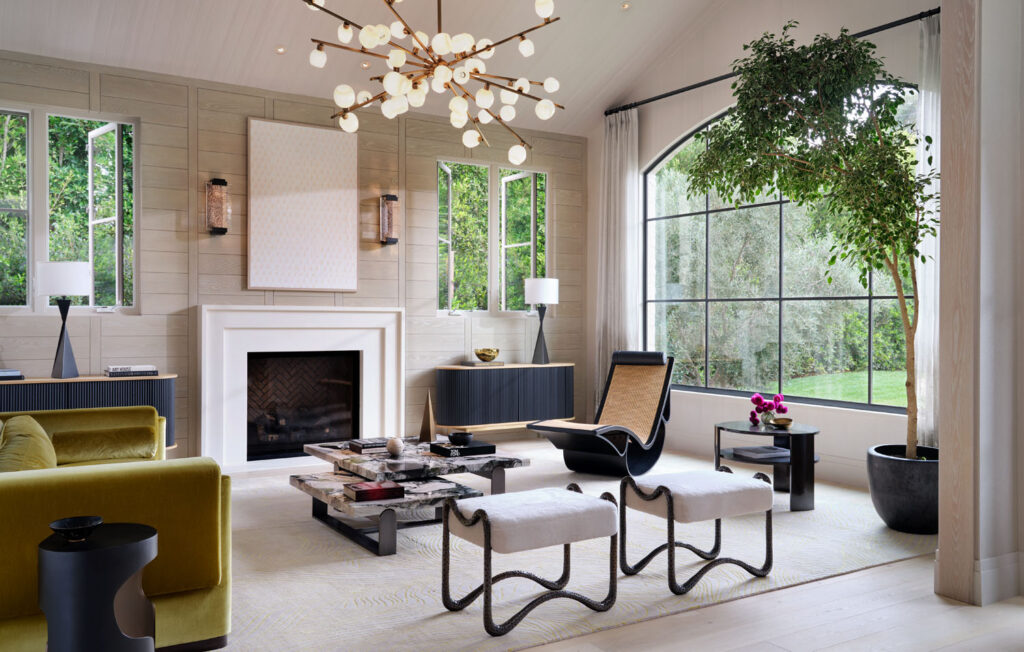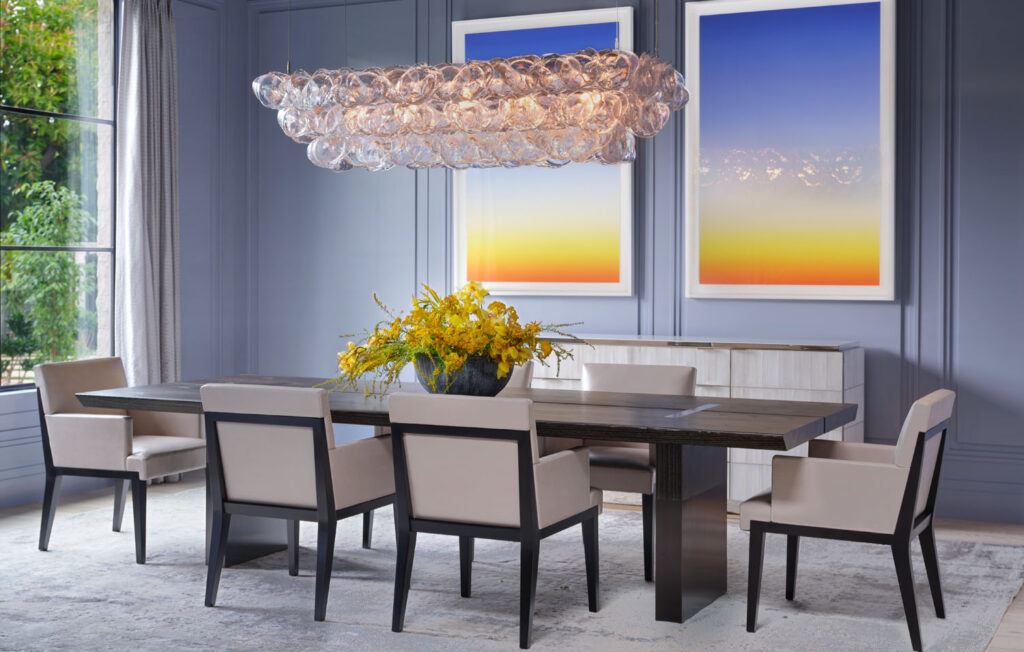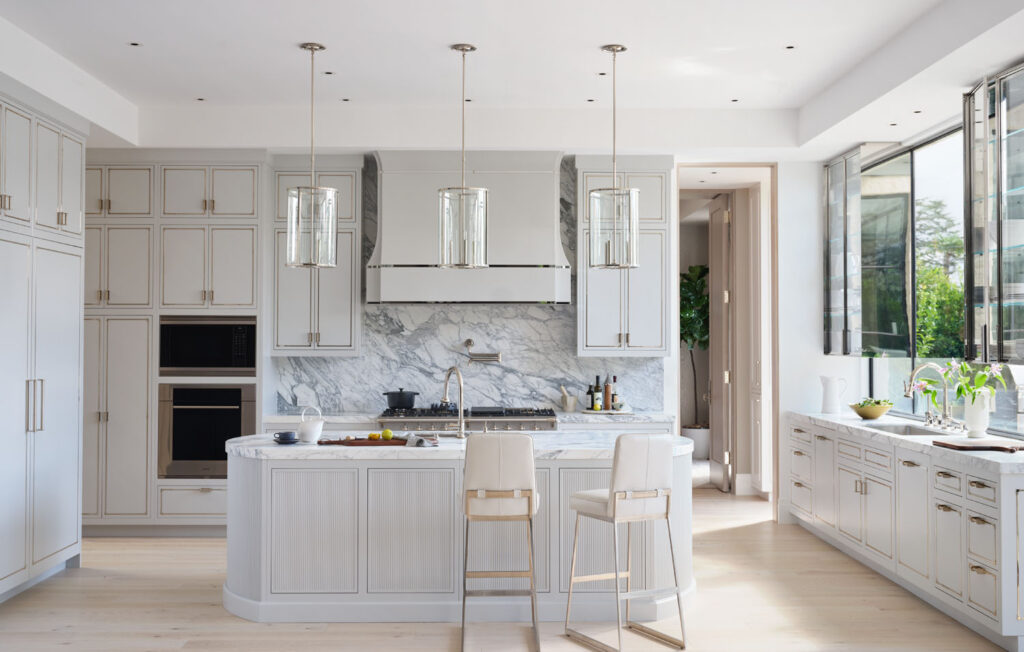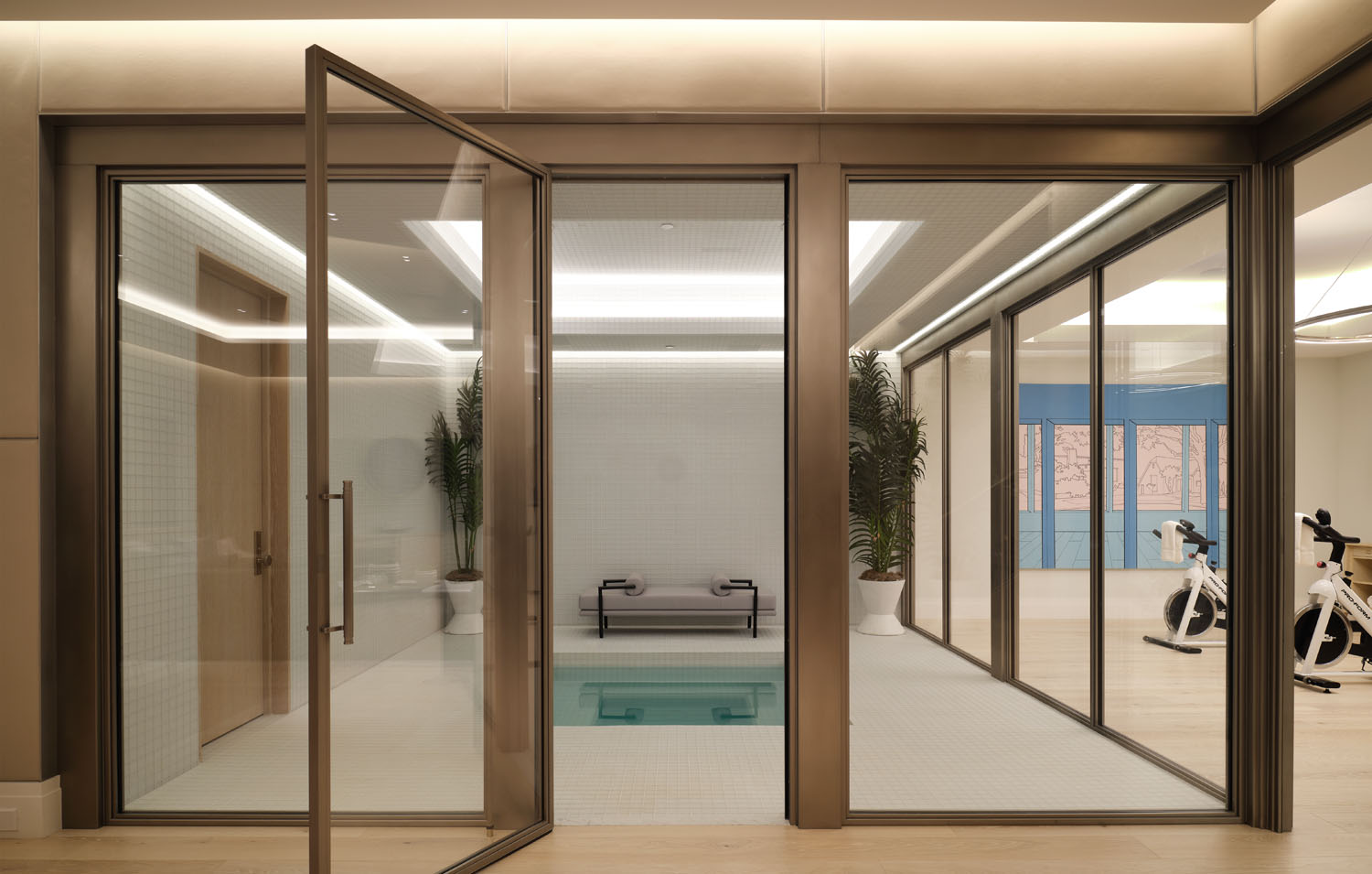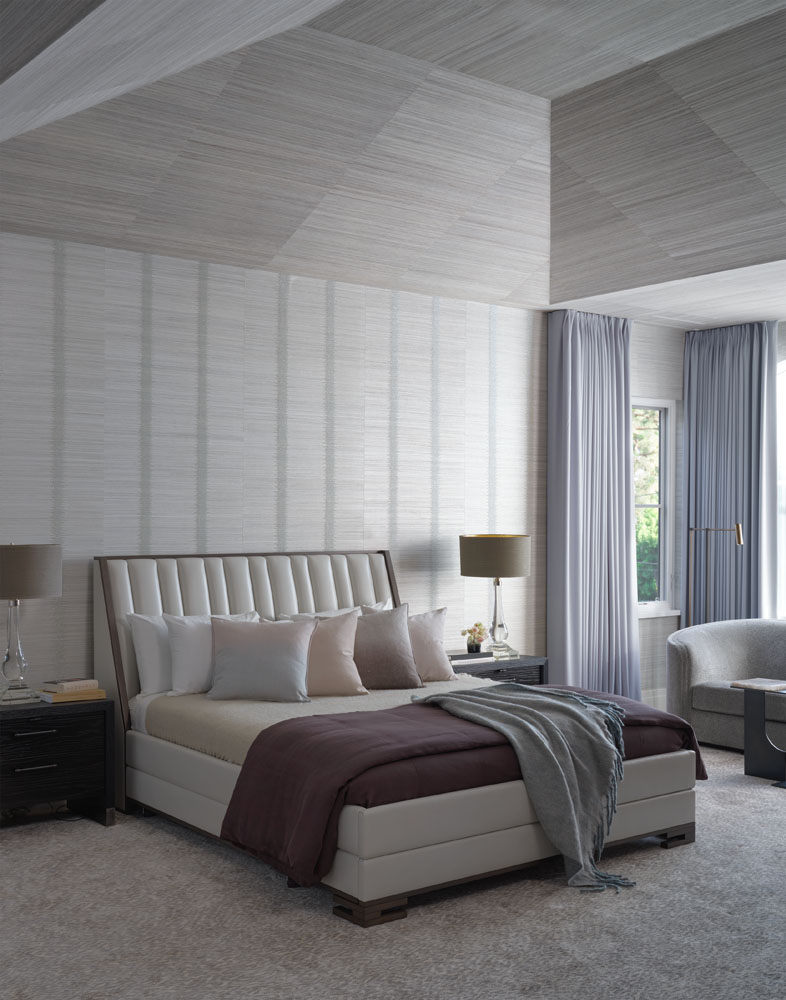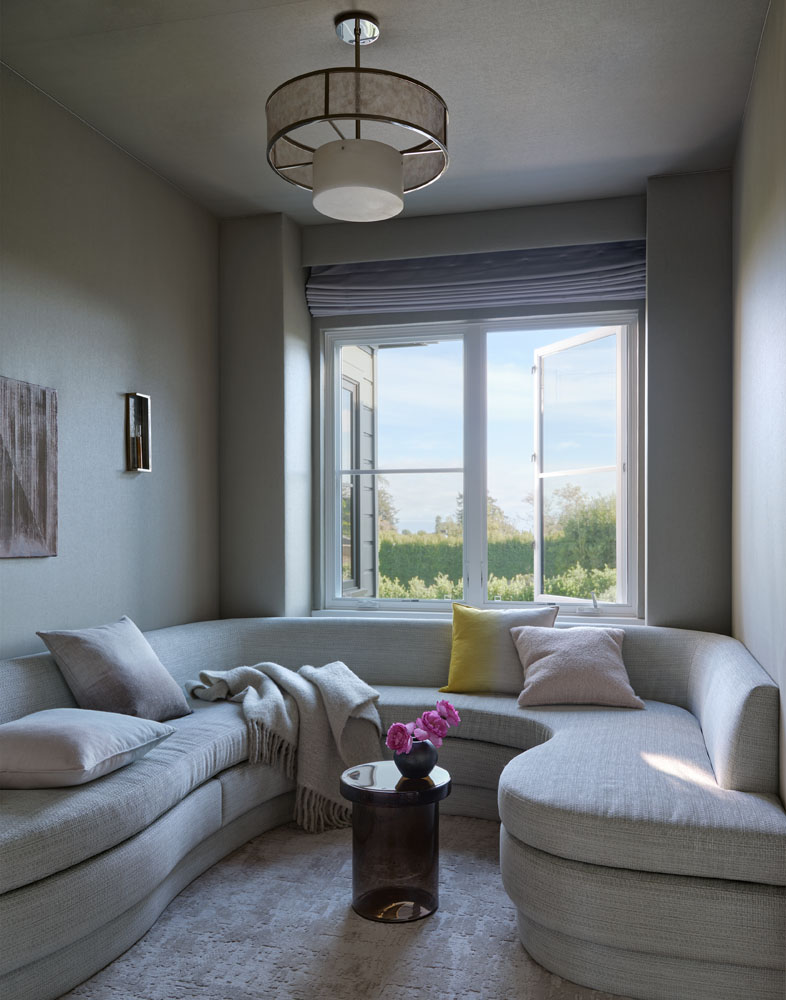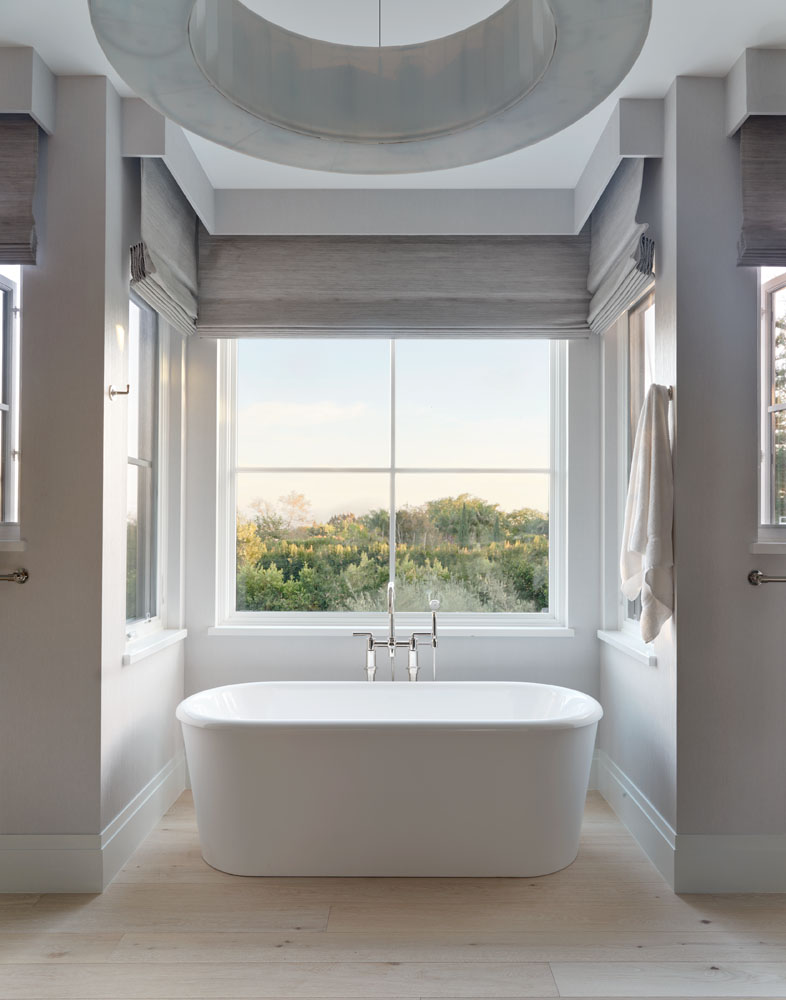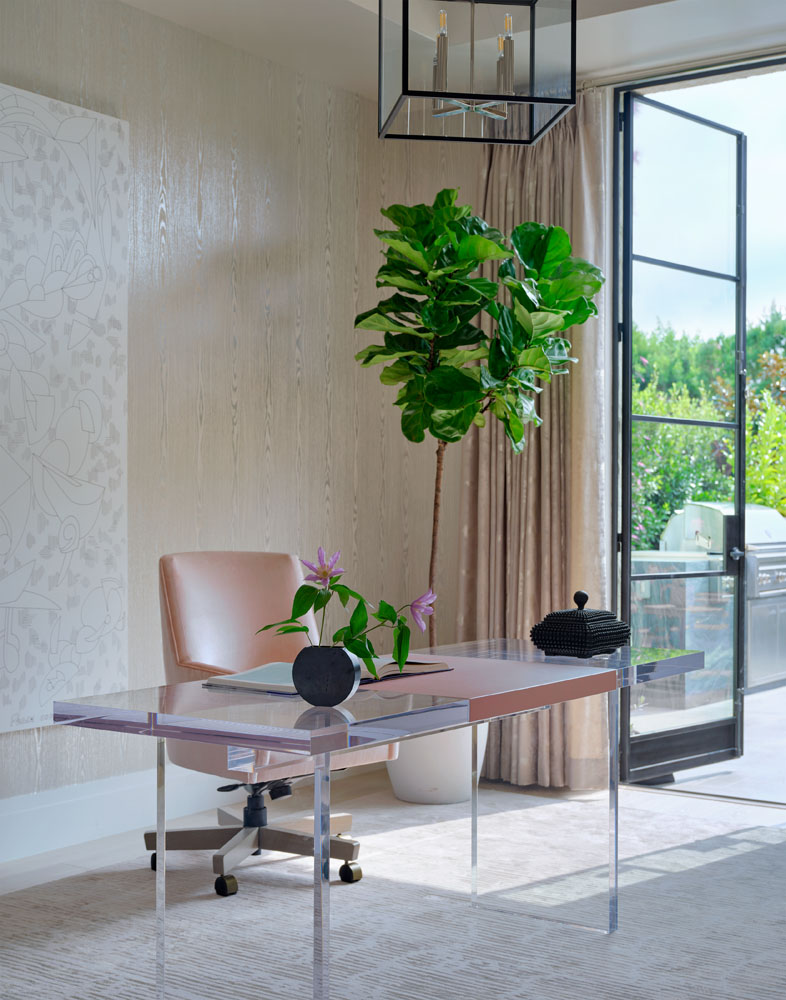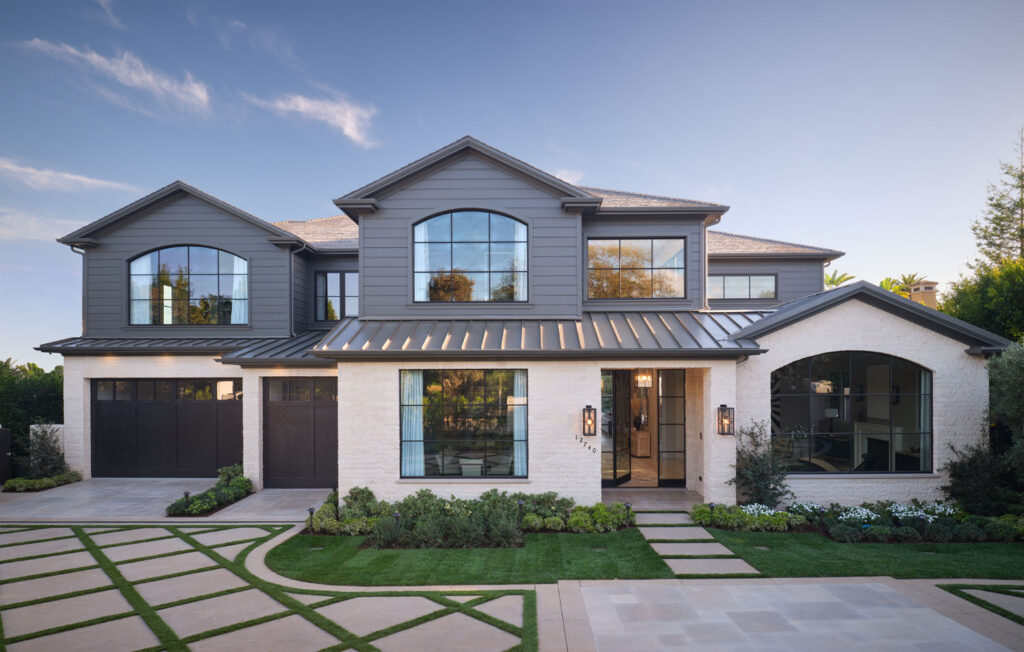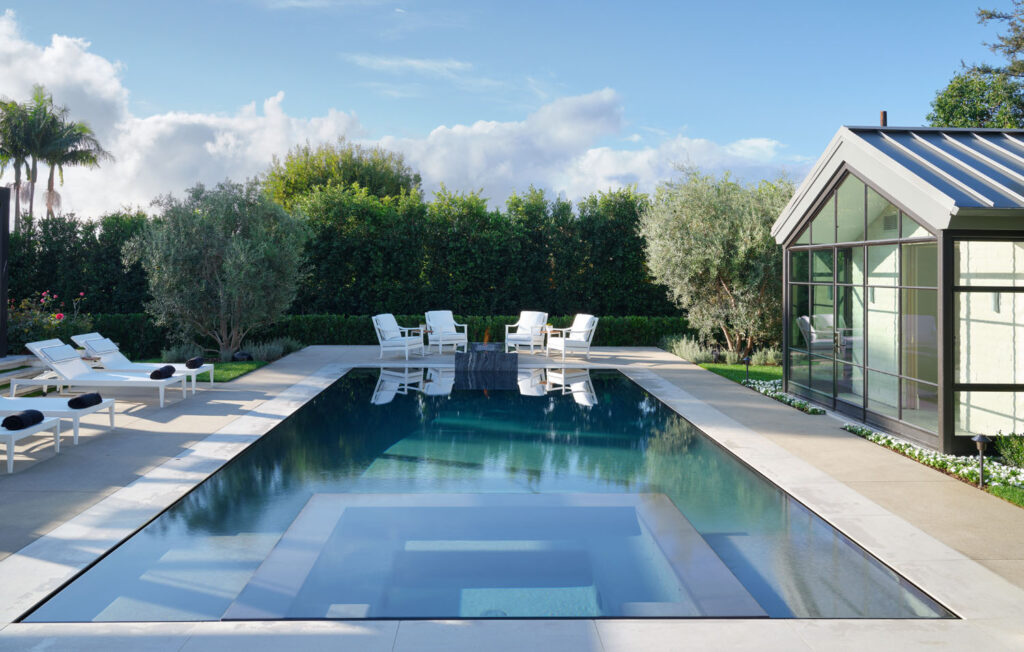Published As:
French Twist
Interior Design: Adam Hunter
Text: Lisa Bingham Dewart
Photography: Trevor Tondro
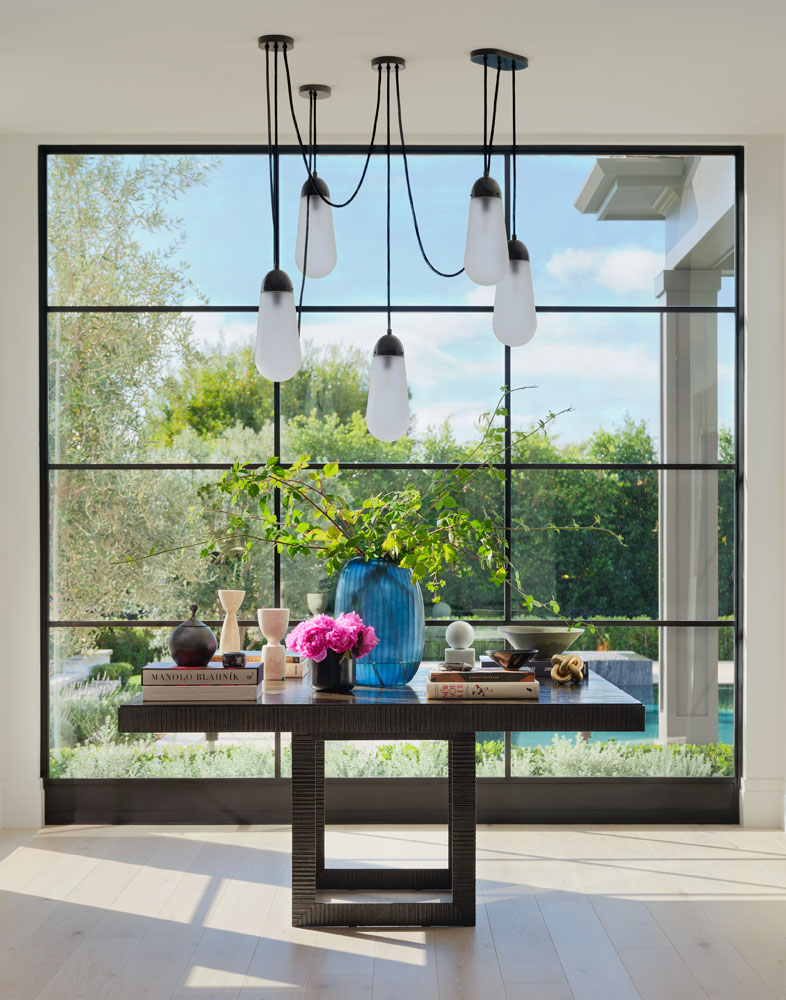
“I always tell people, ‘Trust the process,’ whether it’s your life or your home,” says Adam Hunter. His clients, who tapped the Los Angeles designer to bring a California meets Paris in the ’50s vibe to their abode, took his mantra to heart. They gave him free rein to bring a distinctive point of view to the Brentwood dwelling by architect Ken Ungar. For Hunter, this directive was catnip, since midcentury France is one of his favorite eras of design. “I’m particularly obsessed with the period from 1949 to 1951,” he says. “The style was built into the culture and the language and seemed to exist in the water, air and sky. It was effortless.”
Some strong initial moves laid the right foundation for Hunter’s approach, starting with bleached white oak for the floors “for a slightly glam slant”—and, to elevate things a touch more in the entry—inset with a viola marble “rug.” In the living room, a fireplace of his own design contrasts with walls also paneled in bleached oak. “The simplicity of the fireplace allows the walls to sing more,” he says of the contrast. The dining room’s walls have a presence of their own: Hunter lacquered them in a periwinkle hue, inspired by the couple’s love of shades of purple and lavender, in a painstaking process that took close to five months to complete. Now, “You can see your face in it,” he says. The walls aren’t the only gleaming surface. Throughout the house, he incorporated polished nickel, notably on the entry stair, for that additional hit of brightness and French flair.
Hunter’s furniture choices run between two poles. On the one hand are the pieces with simple or curving silhouettes or both, a formal affinity he suggests dates to his childhood living down the street from the legendary Holly Hunt in Winnetka, Illinois. Here, says the designer, “A lot of Holly Hunt forms fit into that scheme.” Those include the cast bronze side table in the living room, the gently rounded edges of the lounge chair in the family room, and the orthogonal shapes of the dining room chairs and table. Similarly fitting the curvy bill are the primary bedroom’s half-moon-shaped Ryan Jackson Home tables and the dining room’s John Pomp glass chandelier, found at Thomas Lavin.
A select group of furnishings falls into what Hunter calls the “pearl-clutchers” category. These make you clasp a hand to your chest—not in shock but in surprise and delight. He points to the Oscar Niemeyer lounge chair in the living room as one example and notes, “If I were a piece of furniture, I would be this one. There’s a simplicity to it that reminds me of a luxury automobile.” The room’s sofa, upholstered in an acid-green fabric, achieves a similar goal. “It has a synergy that plays off the neutrals in the space,” he muses. The Gregorius Pineo table in the kitchen’s adjacent dining area provides another dramatic moment. Seating eight and resembling a medieval trestle table, the designer calls it “Game of Thrones chic” and delights in the juxtaposition of its imposing form with the softness of the landscape just outside.
Hunter holds rugs and lighting particularly dear. Besides rug selections from notable brands, including a sturdy hide rug from Kyle Bunting in the playroom, his own designs for The Rug Company feature around the house—notably in the living, family, and rec rooms. “The clients loved them,” he says, adding, “They were able to understand my passion and how they ground a room.” Hunter thinks his fondness for rugs traces back to his career as an actor on Broadway. “They are the beginning of the story and function like a set piece,” he notes. As for the lighting, “I think it’s some of the best I’ve ever done,” the designer admits. Large or small, there is an intentionality to each, from a Baker desk lamp in an office or a translucent glass Hammerton chandelier in an elegantly appointed closet to a fixture composed of plaster disks in the family room. He points to the Sputnik-esque chandelier he created for the living room, calling it “joyous and happy.” Joy is something Hunter has been thinking a lot about lately. These days, “trust the process” isn’t his only design mantra. Joy is another. “It’s such an important thing in the world right now,” he says. “I wanted to do a light and bright and happy space—and I want to keep doing them.” Adam Hunter, adamhunter.com
